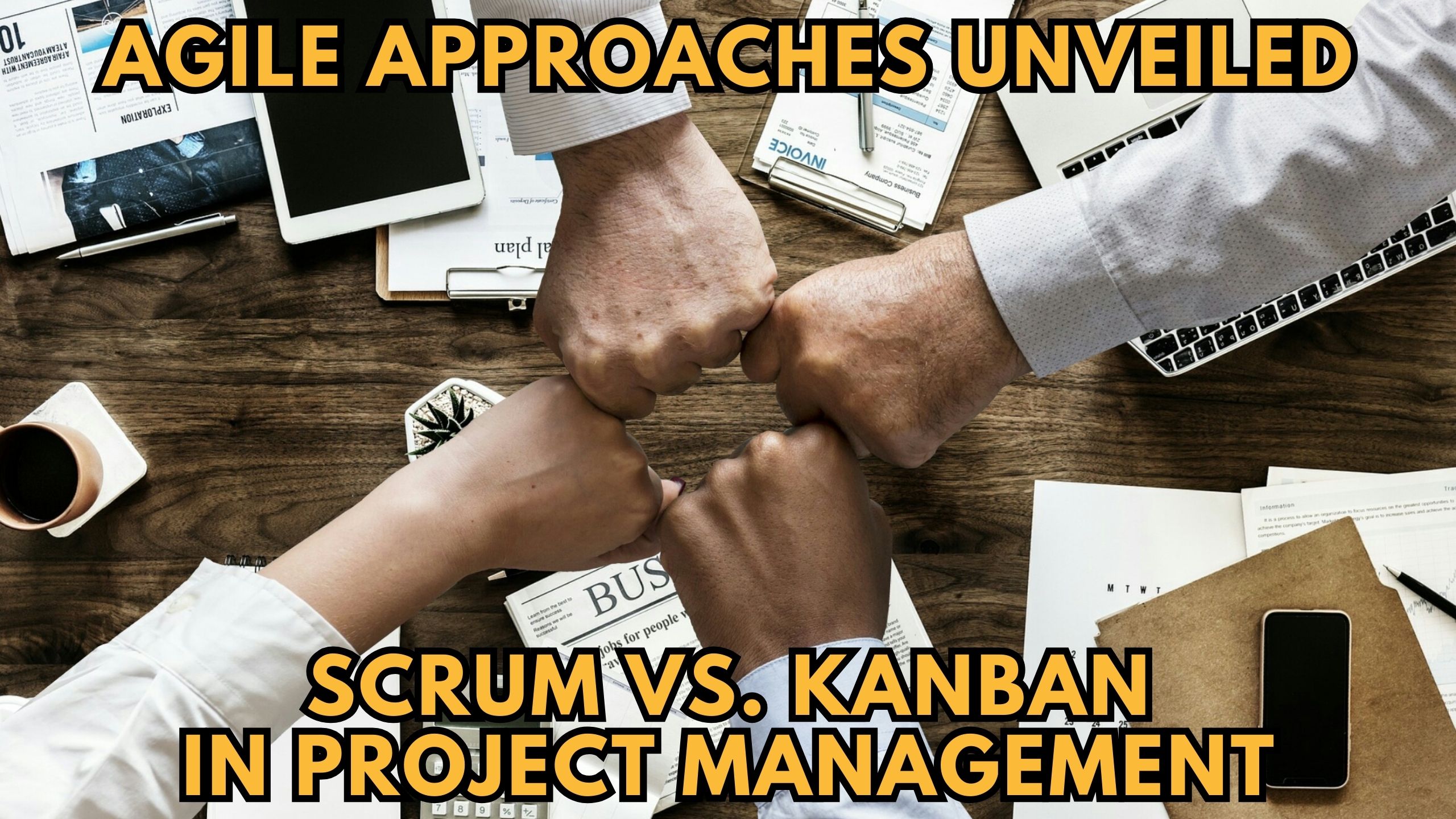Agile Approaches Unveiled: Scrum vs. Kanban in Project Management


Agile Approaches Unveiled: Scrum vs. Kanban in Project Management
In the dynamic landscape of project management, two agile methodologies, Scrum and Kanban, stand out as powerful frameworks. Understanding their nuances and benefits is essential for choosing the right approach tailored to your team’s needs.
Unraveling Scrum: Sprinting towards Success
Overview:
Scrum, a widely adopted agile framework, operates on the principles of transparency, inspection, and adaptation. It organizes work into time-boxed iterations called sprints, fostering collaboration, and ensuring continuous improvement.
Key Components:
- Sprints: Scrum divides the project into sprints, typically lasting two to four weeks. This iterative approach allows for regular feedback and adjustments.
- Scrum Master: The Scrum Master plays a crucial role in facilitating communication and removing obstacles, ensuring a smooth sprint cycle.
- Product Backlog: A prioritized list of features, the product backlog guides the development team throughout the project.
SaaS Products Enhancing Scrum Implementation:
- Jira Software: Jira Software streamlines Scrum processes, offering tools for backlog management, sprint planning, and real-time collaboration. It’s a comprehensive solution for teams embracing Scrum principles.
- Trello: Trello’s visual boards and intuitive interface align well with Scrum’s transparency goals. It facilitates sprint planning, task tracking, and fosters collaboration within the team.
- Monday.com: Monday.com’s flexibility makes it suitable for Scrum teams. It adapts to various workflows, enhances team communication, and provides a visual overview of project progress.
Navigating Kanban: Visualizing Workflow Excellence
Overview:
Kanban, rooted in lean manufacturing principles, emphasizes continuous delivery and workflow optimization. It visualizes the entire workflow on a Kanban board, offering transparency and flexibility.
Key Components:
- Kanban Board: The visual representation of the workflow allows teams to track tasks from initiation to completion.
- Work in Progress (WIP) Limits: Setting limits on work items in each stage prevents overloading and ensures a smooth flow of tasks.
- Continuous Delivery: Kanban encourages a constant flow of small, frequent releases, optimizing efficiency.
SaaS Products Enhancing Kanban Implementation:
- Kanbanize: Kanbanize provides a robust platform for implementing Kanban practices. It offers features like WIP limits, analytics, and workflow automation for efficient project management.
- LeanKit: LeanKit aligns with Kanban principles, offering a visual and collaborative platform. It enables teams to visualize work, set WIP limits, and continuously improve their processes.
- Taiga: Taiga’s intuitive Kanban boards and collaboration features make it a valuable tool for teams practicing Kanban. It emphasizes simplicity and adaptability.
Choosing the Right Approach: Conclusion
In the Scrum vs. Kanban debate, there’s no one-size-fits-all solution. The choice depends on your team’s dynamics, project requirements, and the level of structure needed. While Scrum introduces a structured framework with defined roles and sprints, Kanban offers flexibility and continuous delivery.
Optimize Your Agile Experience with Subscribed.fyi
Elevate your agile journey with Subscribed.fyi. Sign up today to access exclusive deals on SaaS tools tailored for agile project management. Streamline your workflows, boost collaboration, and unlock savings with our member-only deals.
Relevant Links:





